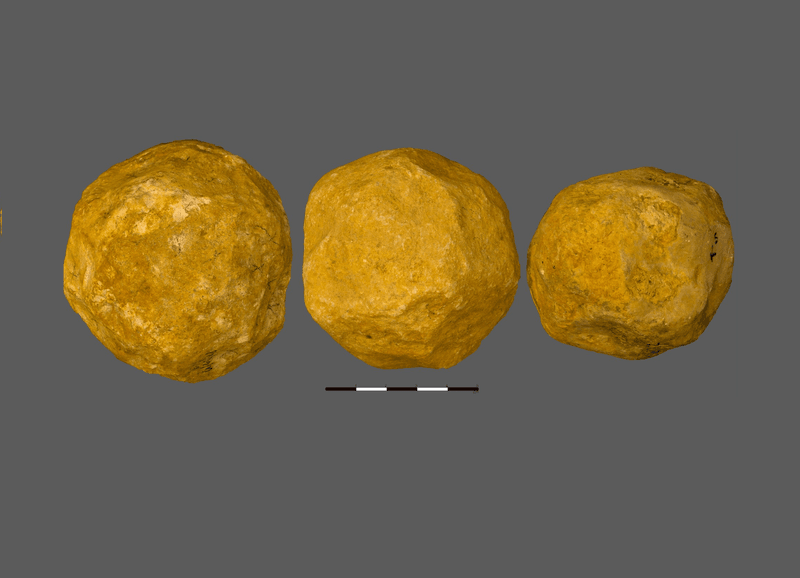In the Jordan Rift Valley of Israel, archeologists unearthed a truly baffling archeological discovery. At a site dating to 1.4 million years ago, they discovered dozens of surprisingly spherical balls made out of limestone. In a new study, researchers put forward their evidence to argue that these enigmatic artifacts were intentionally crafted by early humans, challenging what we know about the evolution of our distant relatives and their technology.
The 150 limestone spheroids were discovered at 'Ubeidiya archaeological site and first described in 1993. Around the size of a juicy plum, the objects are distinctive because they are so round the researchers say they “approach an ideal sphere."
Ever since their discovery, the spheroids have been showered with debate and differing opinions, namely whether they were unintentional by-products or intentionally crafted tools designed for specific purposes.
In the new study, archeologists at the Hebrew University of Jerusalem used cutting-edge 3D analysis methods and concluded they must have been intentionally made.
Notably, the spheroids did not become smoother during their manufacture – as you might expect with a stone being subjected to running water – but they became markedly more spherical – which would generally require a process of “skillful knapping.”
The question remains, however, over what these spheroids were used for. For now, that will remain a mystery.
“Unfortunately, it is still unclear what the spheroids may have been used for. Narrowing down their functionality will require a lot more work,” Antoine Muller, lead study author, from the Computational Archaeology Laboratory at the Hebrew University of Jerusalem, told IFLScience.
Whatever their purpose, it’s certain that our species weren’t the craftsman. Homo sapiens only evolved around 300,000 years ago, so these artifacts were made over 1 million years before “we” even existed.
The discovery of bones at the 'Ubeidiya prehistoric site suggests it was most likely home to Homo erectus around this time during one of their earliest migrations out of Africa around 1.5 million years ago.
Although they still had comparatively small brains, H. erectus was relatively smart. They were remarkably skilled at making tools and some believe they were the first to figure out how to use fire. There's even some speculation they used language, or at least some form of proto-language.
However, the skill required to craft the limestone spheroids challenges our current understanding of their cognitive abilities and technological achievements.
“If similar intentional shaping can be demonstrated on Oldowan spheroids, this would likely represent the earliest evidence of hominins imposing a desired symmetrical geometry on their tools,” the study authors conclude in their paper.
The new study is published in the journal Royal Society Open Science.




